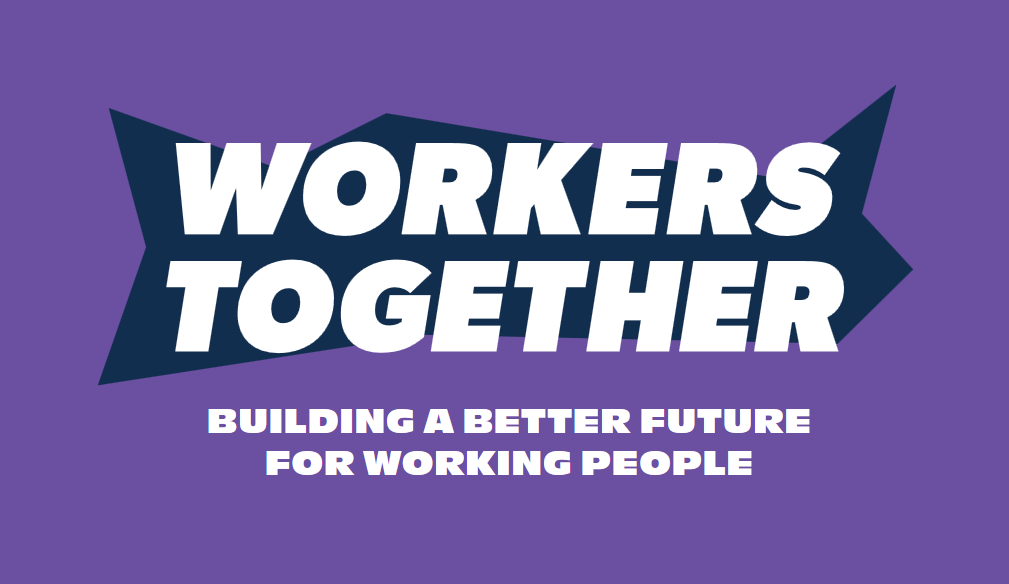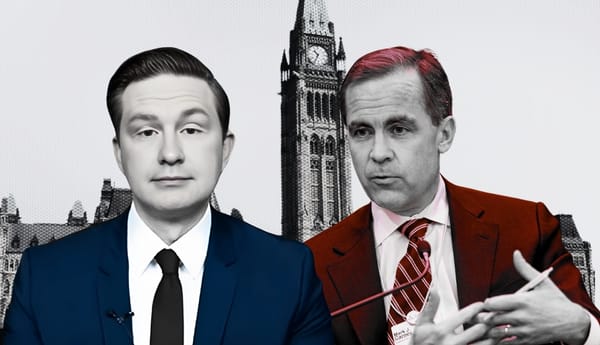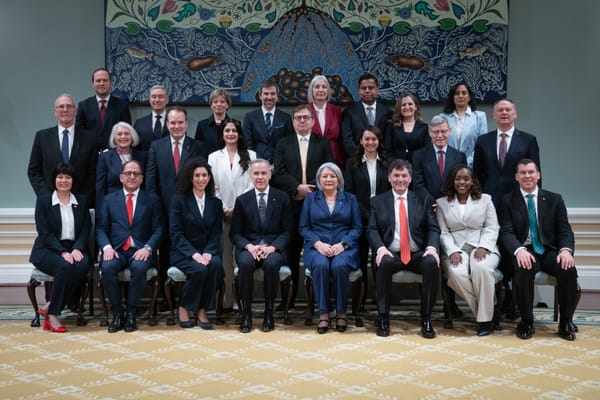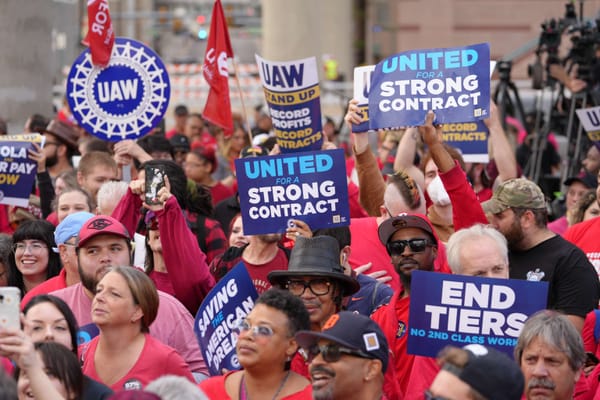
This past week, the United Auto Workers (UAW) union in the United States made headlines when it filed unfair labour practice complaints against Donald Trump and Elon Musk.
On August 13, the union announced that it had filed “federal labor charges against disgraced billionaires Donald Trump and Elon Musk for their illegal attempts to threaten and intimidate workers who stand up for themselves by engaging in protected concerted activity, such as strikes.”
The impetus for the UAW’s charge is a “discussion” between Trump and Musk held on Twitter on August 12 in which the former U.S. president and current Republican presidential candidate celebrated Musk’s illegal firing of striking workers.
It’s estimated that more than one million listeners heard Trump praise Musk — or “the cutter” as Trump referred to him — for his anti-union actions.
The U.S. National Labor Relations Act makes it illegal to fire or threaten to fire any worker who exercises their right to strike or engage in other concerted activities, which includes actions undertaken in the course of organizing a union. Policing such conduct on social media platforms is a relatively new area of labour litigation, though some labour lawyers and union activists have begun filing complaints over public anti-union comments on these media.
The National Labor Relations Board (NLRB) will now investigate the UAW’s charge, which could take considerable time. If found guilty, the two billionaires will unfortunately face little consequence, owing to the toothlessness of American labour law.
Yet the UAW’s case against Trump and Musk is no mere publicity stunt. Rather, it should be understood as part of the union’s present organizing and political strategies.
As Trump continues to seek support from workers, particularly in midwestern swing states, the UAW has been highlighting the former president’s anti-worker agenda.
For example, when announcing the union’s charges against Trump and Musk, UAW president Shawn Fain contrasted the priorities of the Republican presidential candidate with the UAW’s: “When we say Donald Trump is a scab, this is what we mean. When we say Trump stands against everything our union stands for, this is what we mean. Donald Trump will always side against workers standing up for themselves, and he will always side with billionaires like Elon Musk, who is contributing $45 million a month to a Super PAC to get him elected. Both Trump and Musk want working class people to sit down and shut up, and they laugh about it openly. It’s disgusting, illegal, and totally predictable from these two clowns.”
The union has endorsed Democratic Party candidate Kamala Harris for president, and had previously endorsed Joe Biden after some initial delay, despite calling for a ceasefire in Gaza and remaining seemingly at odds with the Democratic Party over various foreign policy issues. It also recently launched a digital campaign “to defeat Trump in November.”
More importantly, the UAW’s charges should be read against the backdrop of its broader strategy and $40 million commitment to organize all non-union automakers in the U.S., including at Tesla. Under the plan, the union goes public with campaigns at individual companies, including holding rallies with UAW leadership, when 30 per cent of workers have signed cards. With 70 per cent of workers signed on, the union seeks certification.
The UAW scored a resounding victory this April at Volkswagen in Tennessee, where workers voted 73 per cent in favour of unionizing. Despite a subsequent setback at an Alabama Mercedes factory, the union’s herculean organizing campaign continues.
Given its market share and its prominence as an electric vehicle manufacturer, Tesla remains a key target for the UAW. Yet Tesla and its CEO are also formidable opponents.
Musk’s anti-unionism, in the U.S. and abroad, is notorious. The Tesla CEO remains embroiled in a labour dispute with striking mechanics in Sweden over his refusal to recognize the workers’ union and sign onto a collective agreement. In Sweden, sectoral collective agreements cover most major industries. Employers can opt out, though doing so often exposes them to considerable pushback from the well-organized Swedish labour movement. In Tesla’s case, postal, port and other unions across the Nordic countries have all taken solidarity actions against the company.
Musk has a well-established record of retaliating against workers organizing in the United States as well.
During a previous UAW campaign in 2016 at Tesla’s Fremont, Calif., “factory of the future,” Musk and the company engaged in a series of harsh union-avoidance tactics. A federal appeals court upheld an NLRB decision finding that a former Tesla worker was fired for his union organizing activities, a claim many other workers have made. The court also found that Musk illegally threatened workers through Twitter with the loss of stock options if they unionized. In 2018, another worker and his supervisor told the Guardian that the worker’s performance reviews were altered to justify firing him for union activity.
Since then, Musk has seemingly become even more ruthless in opposing unions, at Tesla as well as Twitter.
In February 2023, Tesla allegedly fired dozens of workers at its Buffalo, N.Y., facility after the organizing committee informed the CEO about their campaign with Workers United. The company later beat this charge at the NLRB, claiming that the terminations were performance-related. This outcome was likely the result of insufficient evidence.
When Musk took over at Twitter, one of his first actions was to terminate the company’s unionized janitorial staff on the same day that they launched an Unfair Labor Practice strike against the company. These workers were members of Service Employees International Union (SEIU), Local 87, which represents roughly 5,000 janitors in the Bay Area.
Thus, as it aims to organize a relentlessly anti-union company, the UAW is seeking to use both the levers available through federal labour law and social media to spotlight Musk and Tesla’s union hostility. Given the paltry penalties afforded under the law, any public pressure that the union can bring to bear on Tesla can only aid the organizing campaign.
Since the election of reformer Shawn Fain as president, the UAW and the new staff around Fain have put on a clinic when it comes to the effective use of social media. Key to the success has been strongly tying digital engagement to the union’s on-the-ground organizing campaigns.
In last fall’s “standup strikes” at the Big Three automakers, the union adeptly utilized social media to engage rank-and-file members, but also to rally the broader public to its cause. By framing its fight with the auto giants as a battle between rank-and-file workers and the billionaire class, members of the public with no immediate stake in the auto sector came to identify with the workers and support their strikes.
The labour movement is increasingly taking the class struggle digital. Though latecomers to many mass digital technologies, unions now employ social media tools in many successful campaigns. While no substitute for the hard work of organizing, there is evidence that digital technologies can help facilitate worker-to-worker training, engagement and education. Equally important, social media can allow unions to reach new workers and bring labour’s issues to a broader public that might not otherwise engage with unions.
When it comes to defeating Musk and winning a union at Tesla, supermajority support among the workers and public pressure will likely both be key. Actions like publicly filing federal labour charges against Musk and Trump may help move the needle.
The UAW is showing how effective a grounded social media campaign can be when paired with smart, committed and well-funded organizing. Once again, Canadian unions could learn a thing or two.
Recent Class Struggle Issues
- August 12 | The Way We Measure Unemployment In Canada Is Broken
- August 5 | How To Fix The Staffing Crisis In Manitoba’s Health-Care System
- July 29 | ‘Sandwiched’ Caregivers Show Need For Improved Welfare State
- July 22 | Doug Ford Is Letting Migrant Workers Die From Extreme Heat







